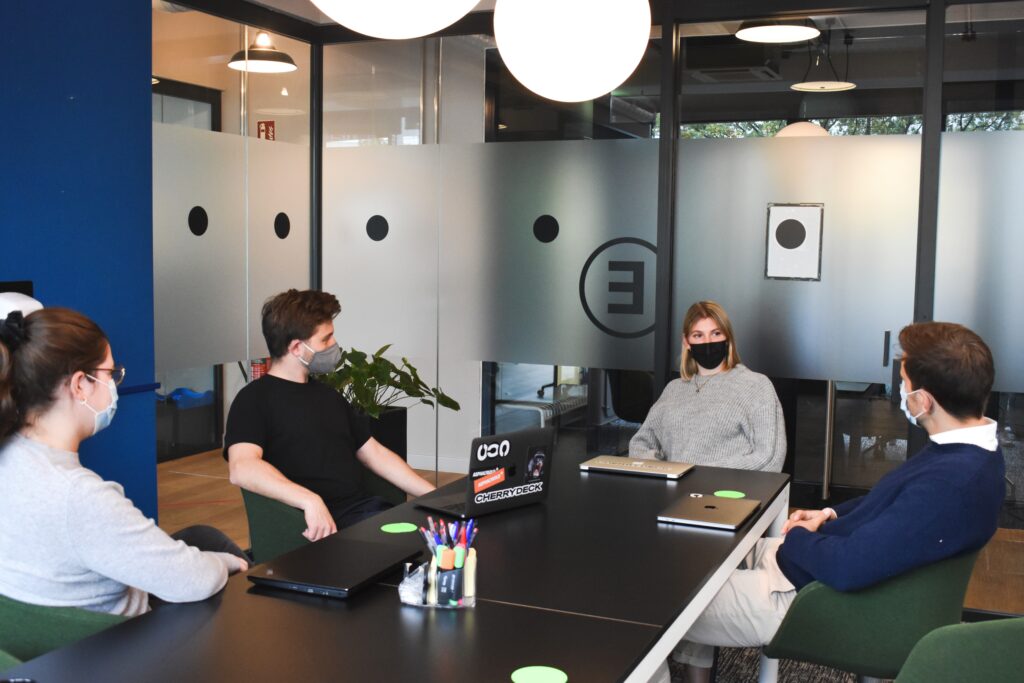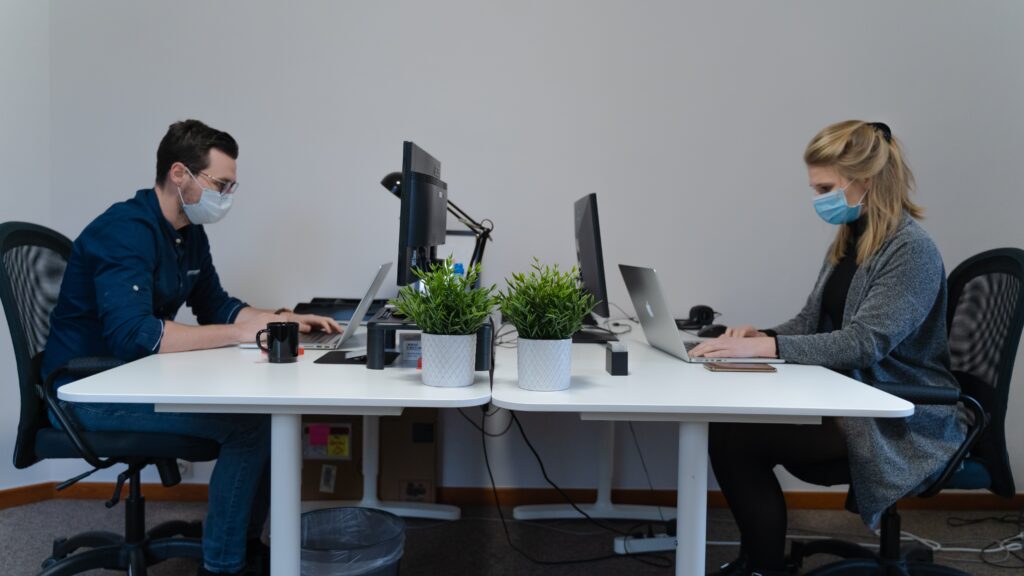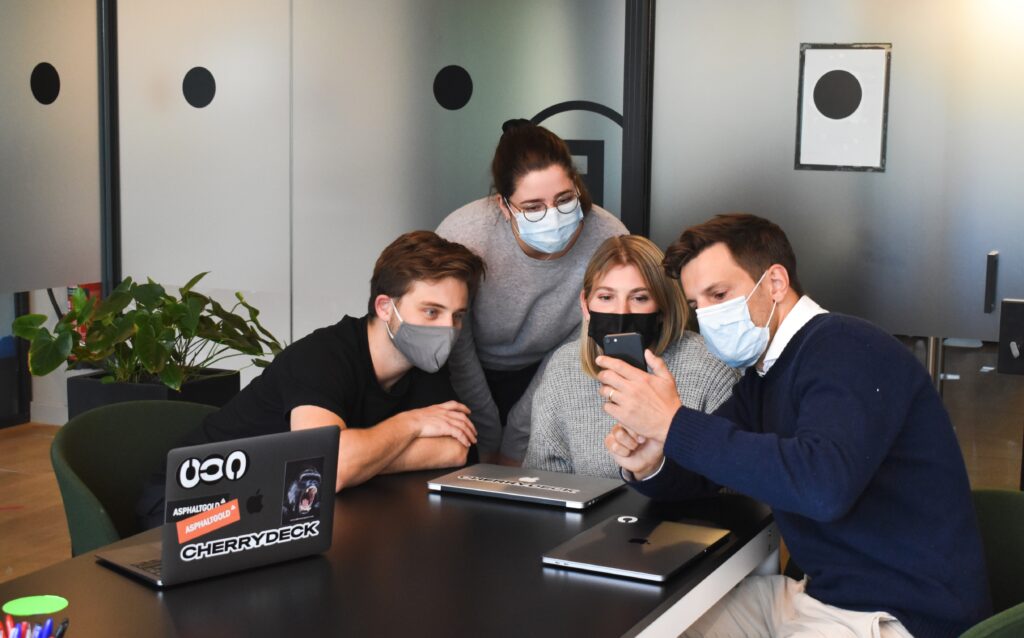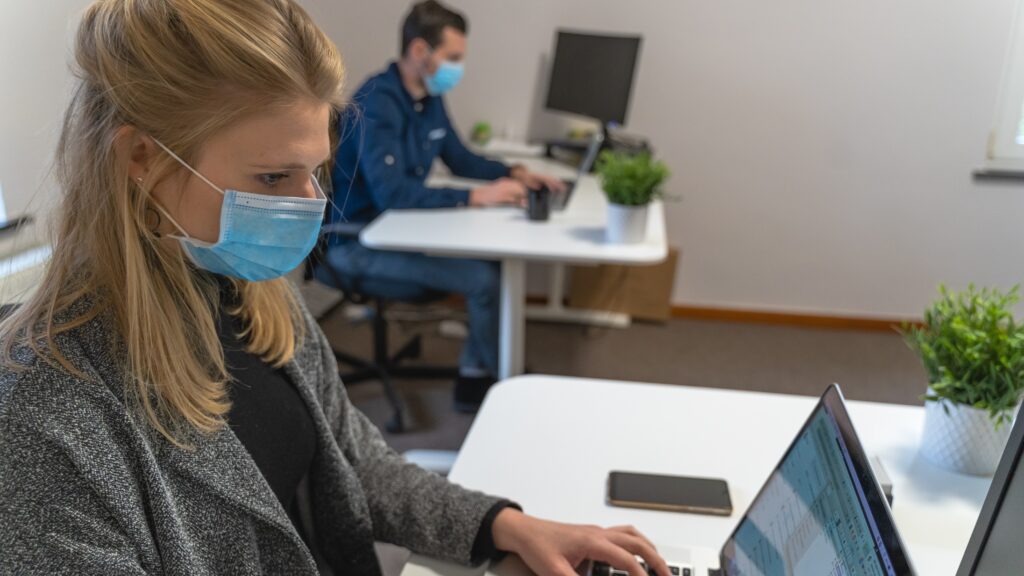Working Safely In-Person: How Employers Can Get Ready to Return to the Office

As the world recovers from the COVID-19 pandemic, organizations around the globe are preparing to bring their team back to the office. But how can you make sure it’s a safe and enjoyable experience for all? Here are some strategies and tips to consider.
It’s hard to believe that, after more than 16 months, the COVID-19 pandemic seems, finally, to be subsiding. And as it does so, mandated work-from-home orders are following suit across the world.
But the reality is that the office simply won’t be the same as it was pre-pandemic—at least not for the foreseeable future. And as organizations get ready to bring their teams back for in-person work, one question is at the forefront of every leader’s mind: what needs to be done to ensure their workspaces are safe for their employees to return to?
In this article, we dive into seven tips, strategies, and considerations that you can consider when preparing for your employees’ return to the office.
Create a Safety Plan

Having a plan in place is fundamental to a successful return to the office. This should be formalized and documented.
Your plan should be a comprehensive overview of every policy and best practice your organization has in place pertaining to COVID-19 and in-person work.
The U.S. Department of State has a great COVID-19 workplace safety plan you can reference if you’re feeling unsure where to start.
And if you’re looking for an even more in-depth resource, you might want to check out this Pandemic Business Playbook that details things like:
- Employer responsibilities
- Health screening
- Training and communication
- Physical distancing protocols
- Cleaning and disinfecting measure
This will give you a good frame of reference for things to keep in mind.
Check Your Local Regulations, Mandates, and Resources
You need to understand that the COVID-19 pandemic is still an ever-evolving situation. So, it’s important to stay up-to-date on both state and federal regulations and mandates.
Check your local government website frequently—they will provide to-the-minute news and updates for what’s going on in your area.
Prepare for the Possibility of “Shiftwork”

There’s a good chance that your team’s return to the office won’t be able to happen all at once. Instead, the possibility of a hybrid work environment or an office that operates in “shiftwork” is more realistic.
With that being said, you may want to consider:
- Creating a schedule that hosts a certain number of staff in the office on certain days per week in order to keep capacities down and open space readily available
- Staggering entry and exit times by a few minutes for each employee (or for a few employees at a time) to minimize traffic and congestion
- Setting parameters for capacity limits in meeting rooms and continuing to encourage virtual meetings when possible
As much as it would be great to have all of your staff back at once, the fact is that it may not be safe just yet to do so. In the meantime, finding ways to bring people in safely will allow them to re-engage with one another and with the dynamic of being at the office again.
Utilize the Right Tools and Products in Your Workspace
The physical safety of your office is incredibly important. That means understanding the tools and strategies at your disposal can go a long way in keeping your team members safe at work.
This includes:
- Hand Sanitizer: Keeping your hands clean will still be vital in reducing the spread of the COVID-19 virus. So, make sure your office is stocked with hand sanitizer stations, especially in high-traffic areas.
- NanoSeptic Skins: These self-cleaning “skins” are incredible. They’re chemical-free and are continuously self-cleaning, meaning they kill viruses without having to be replaced after each use. They’re perfect for high-touch like door handles.
- UV-C Disinfectant Lamps & Air Filtration System: Believe it or not, UV light can actually help kill airborne viruses like COVID-19. When used daily in common areas and meeting rooms, UV-C disinfectant lamps can help significantly reduce the risk of the virus spreading.
- Communication Visuals: A simple but effective tool, it’s wise to include signage and visuals throughout your office reminding people of the safety and sanitation best practices and regulations you’ve implemented.
These proactive steps can have a huge impact on the level of safety in your workspace when your team finally comes back.
Refresh Existing Policies and Create New Ones

Even under normal circumstances, company policies should be reviewed and refreshed frequently. And this is especially important during the COVID-19 pandemic.
You may want to work with your human resources team to refresh old policies or create new ones, such as:
- Establishing Your Stance on Vaccinations: While vaccinations aren’t mandatory in North America, many organizations are still faced with the decision on whether to make them mandatory for in-person work. This is a challenging decision to make, so ensure you consult with legal counsel as well as human resources professionals when engaging in these conversations.
- Clarifying Policies on Work Travel and Vacation Returns: While travel was never previously something that got a lot of thought by organizations, it certainly will be going forward. You’ll need to decide how to handle things like work travel and staff returning from vacations abroad—both of which are virtually inevitable.
- Determining Parameters Around Masks: Much like vaccinations, masks are becoming optional in many areas in North America—but many businesses are still making marks mandatory in their workplaces. This is another decision that you’ll have to make, long before employees ever return to the office.
- Updating Cleaning Policies: There are no two ways about it—keeping your office clean is vital. So, it’s important that you and your management team determine what types of cleanliness policies will be in place. For instance, this could include asking employees to regularly wipe and sanitize their desks or common areas once they’re done using them. It could also include increasing the frequency with which you have your office professionally cleaned, especially in high-traffic areas like elevators or break rooms. If you plan to do any extra cleaning yourself, the CDC has an extensive list of cleaning products that are certified to kill COVID-19.
- Reinforcing physical security measures: As you prepare for employees to return to the office, it’s important to also review and reinforce physical security measures, ranging from electronic access control systems to physical barriers and employee identification protocols. With the pandemic still ongoing, there may be a need to implement additional security measures such as health screenings or temperature checks for employees entering the workplace.
Prioritize Employee Wellbeing

Physical safety isn’t the only consideration you’ll want to make. Looking out for your employees’ mental health and overall engagement and wellbeing is going to be equally important.
Moving away from remote work will present all kinds of new challenges, like childcare demands, fear of contracting COVID-19, and other pressures that may cause stress and anxiety.
There are a few things that will be vital to caring for your employees’ mental and emotional wellbeing, including:
- Checking In Frequently: As a leader, it’s going to be critical for you to check in with your team members regularly. This doesn’t necessarily have to be formal—even just connecting with your staff to see how they’re feeling and if there’s anything they can do to support them will go a long way.
- Rebuilding Relationships: After more than a year away from one another, finding ways to rebuild bonds between employees will be important. Hosting fun, light-hearted team building activities can set an incredibly positive tone for your team right from the outset. Even taking twenty minutes at the beginning of your meetings to do some team building icebreaker questions together can help people get back in the swing of things.
- Refreshing Core Skills: From strong communication to conflict resolution and emotional intelligence, helping your leaders reinforce their soft skills will be vital for a smooth and successful return to in-person work. Hosting group training and development programs can be a great way to do this. If you’re interested in learning more about this topic, check out our list of 13 examples of soft skills every leader needs in 2021 where we polled real-world business leaders about the most vital skills for leaders post-pandemic.
- Being Compassionate and Understanding: The anxiety and uncertainty caused by the pandemic have caused increased feelings of depression and stress among people. So, being compassionate and understanding is critical for a successful return to the office—for instance, be understanding that not every employee will have the same level of comfort in coming back to work in-person and handle each situation on a case-by-case basis.
- Maintaining Open Lines of Communication: Beyond simply checking in with your team members, it’s also important to maintain open lines of communication on all fronts. This includes keeping your team members updated on policy changes, news and updates all the state of the pandemic, what you’re doing to keep them safe, and what you expect of your staff.
In the face of unprecedented challenges and adversity, your employees’ mental and emotional wellbeing is going to underpin the success of your team’s return to the office—and of your organization as a whole.
Conduct Workspace Upgrades as Required

While any kind of large-scale workspace upgrade is a significant and difficult undertaking, some of them may be critical in the wake of the pandemic—especially plumbing, ventilation, and filtration systems that filter, dilute, and remove pathogens.
When looking into improving your office’s filtration system, focus on the minimum efficiency reporting value (MERV), a number that ranges between 1 and 16 that is relative to an air filter’s efficiency based on particle size.
The higher the MERV, the more efficient the air filter is at removing particles.
At the lower end of the efficiency spectrum, a fiberglass or polyester panel filter may have a MERV of 4 or 5. At the higher end, a MERV 14 filter is typically the filter of choice for critical areas of a hospital and helps prevent the transfer of bacteria and infectious diseases.
For office buildings, a MERV 13 filter is typically recommended for office buildings.
So, when it comes to air quality, consider the following:
- Address both perceived and actual indoor air quality concerns (as an extension of over-communication, address your employees’ concerns with air quality, even if the issues aren’t pertinent)
- Conduct air quality assessments and testing upon returning to the office
- Develop messaging and education for building occupants-dashboards, apps, situational cues-to reduce concerns regarding potential pathogen transmission
For more general air quality tips, including the importance of bringing the outdoor air in, check out this list of resources from The U.S. Environmental Protection Agency (EPA).
In the eyes of many organizations and employees, a return to in-person office work is going to be incredibly welcome and a huge relief.
But it’s still extremely important for organizations to ensure that proper steps are being taken to make it a safe and enjoyable experience for everyone.
What are you doing to ensure your team’s return to the office is safe? Let us know in the comments section below!
Learn More About Team Building and Training Programs to Rebuild Connections Between Colleagues Post-Pandemic
If you’ve got questions about team building and training programs that can help enhance your team’s return to the office, reach out to an Employee Engagement Consultant.




Comments